Why Is Alexanderplatz Famous? Uncovering Berlin’s Iconic Hub
The beating heart of Berlin is Alexanderplatz.
So, you might be asking yourself – why is Alexanderplatz famous?
From humble beginnings as a cattle market in the Middle Ages to becoming a bustling hub for commerce, politics, and culture. This bustling square has witnessed the rise and fall of empires, the echoes of historical speeches, and the footsteps of countless travellers.
It has witnessed a mishmash of events and transformations, making it an enduring symbol of Berlin’s resilience and strength.
It’s where history and modernity collide, just like the city itself.
Alexanderplatz or as you’ll hear in Berlin “Alex” to many is the most visited area of Berlin.
It’s likely one of the first places to visit when you come to the city. At least it was for me. With nearby attractions of the Fernsehturm (TV tower), the Nikolai Quarter and the Rotes Rathaus (Red City Hall), Alexanderplatz makes for a great starting point to see the city.
Table of Contents
This post may contain affiliate links. If you click on an affiliate link, at no additional cost to you, I will earn a small commission if you decide to book. Please check out my privacy policy and disclosure for more information.
Berlin Alexanderplatz: Its Famous Timeline in History
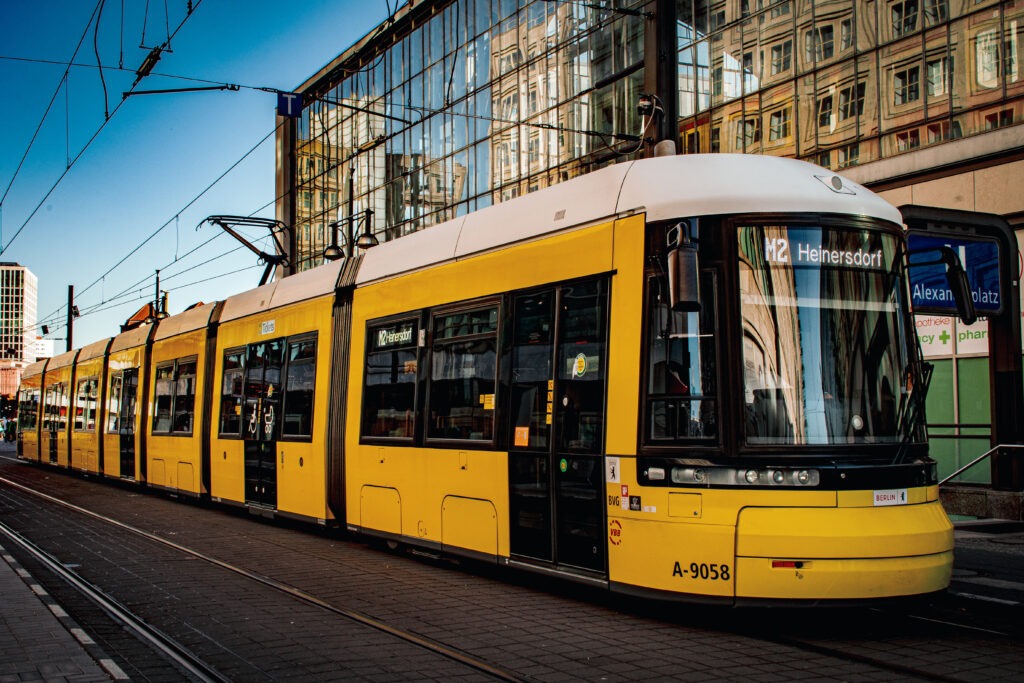
13th to 17th Century
Alexanderplatz has its roots in the 13th century when it housed the ‘Heiliger Georg’ hospital, lending its name to the ‘Georgentor’ city gate. Over time, it became an entry point for those who wanted to enter Berlin.
17th Century
At the beginning of the 17th century, it grew to include a quaint market square named “Ochsenmarkt” or “Oxen Market.” It was a modest marketplace where livestock and goods were traded by merchants from near and far.
18th Century to 19th Century
Although it continued as a market, it also evolved to be a popular area for military parades by the Prussia troops. In 1805, it was officially renamed “Alexanderplatz” in honour of Tsar Alexander I of Russia, who visited Berlin that year.
19th Century
The 19th century saw Alexanderplatz grow in importance. It became a central transportation hub with the arrival of horse-drawn trams in the 1860s. This transformation laid the groundwork for its future evolution.
During the Weimar Republic era, Alexanderplatz emerged as a cultural and entertainment hotspot, with theatres, cinemas, and vibrant nightlife establishments.
20th Century
By the early 20th century, Alexanderplatz had transformed into a significant transportation hub. The construction of the U-Bahn (subway) station in 1913 laid the foundation for its future growth.
1930s
As the Nazi regime took hold, the square underwent a radical transformation. It was renamed “Adolf-Hitler-Platz,” and grand architectural changes were planned, although many were never realized due to the outbreak of World War II.
Post-War Reconstruction
Following the war, Alexanderplatz was heavily damaged, but during the DDR (Deutsche Demokratische Republik was East Germany or in English GDR: German Democratic Republic) era, extensive reconstruction efforts took place. Notably, the iconic TV Tower (Fernsehturm) was erected in 1969, altering the city’s skyline forever.
1989
Alexanderplatz East Berlin played a pivotal role in history during the Peaceful Revolution. It became a gathering point for protests, and its square was filled with East Berliners demanding freedom and change, contributing significantly to the fall of the Berlin Wall on November 9.
1990s
After German reunification, Alexanderplatz experienced rapid modernization and commercialization. The 1990s saw a surge in new developments and the revitalization of the area and later in 2007, the expansive shopping center, Alexa, opened.
21st Century
Today, Alexanderplatz continues to evolve, remaining a vital transportation hub, a shopping zone, and a location for various events and festivals. Its name now represents not only historical ties but also a bustling center of modern Berlin.
Berlin Alex is Famously Germany’s Biggest Public Square
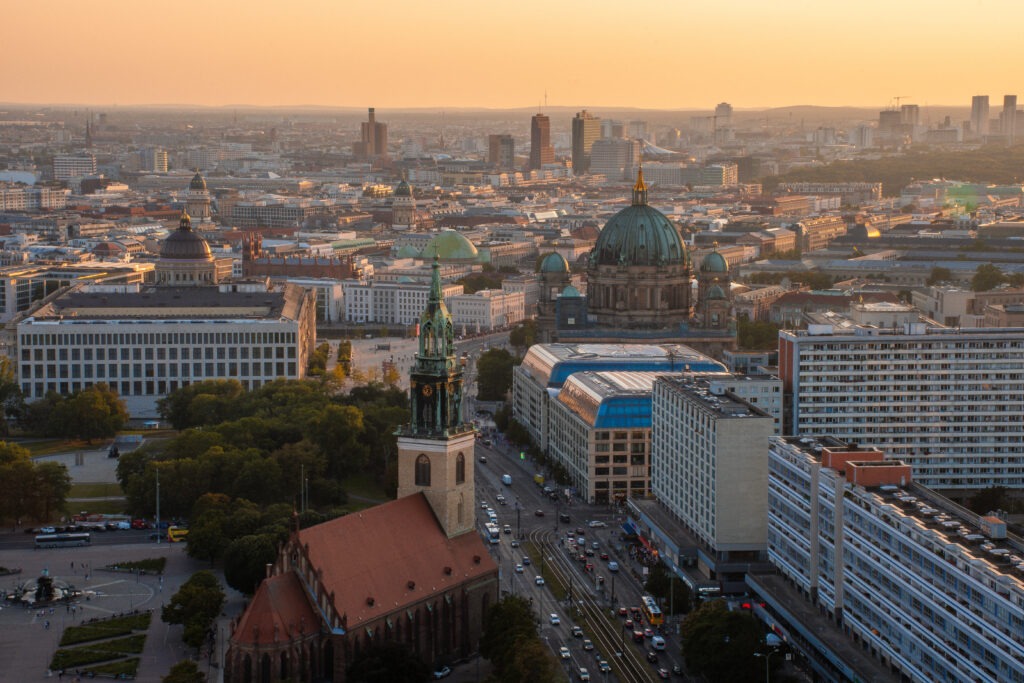
There’s no denying it, Alexanderplatz’s lively atmosphere is infectious. It’s a sensory overload. From the architectural giants of the towering TV Tower to the shops, cinemas and restaurants lining this pedestrian zone buzzing with people from all corners of the globe.
In the ever-moving crowds of people, conversations in multiple languages mingle in the air. The trill of laughter from friends blends with the street musicians’ melodies, infusing the square with a rhythmic liveliness. And, the hum of traffic reminds you that you’re in the heart of a thriving metropolis.
That very energy is what makes Berlin an exciting city to visit.
How to get to Alexanderplatz?
You can reach Alexanderplatz by Berlin’s extensive public transportation network:
U-Bahn: Alexanderplatz, lines U2, U5 and U8.
Train: Alexanderplatz, lines S5, S7, S9 and S75.
Bus: Alexanderplatz, lines TXL, M48, 100, 200 and 248.
Tram: M4, M5 and M6
Famous Landmarks on Alexanderplatz
When you step foot onto Alexanderplatz, Germany’s largest square, you’re entering a vibrant nexus of Berlin’s past and present, packed with iconic sights waiting to be explored.
The World Time Clock (Urania-Weltzeituhr)
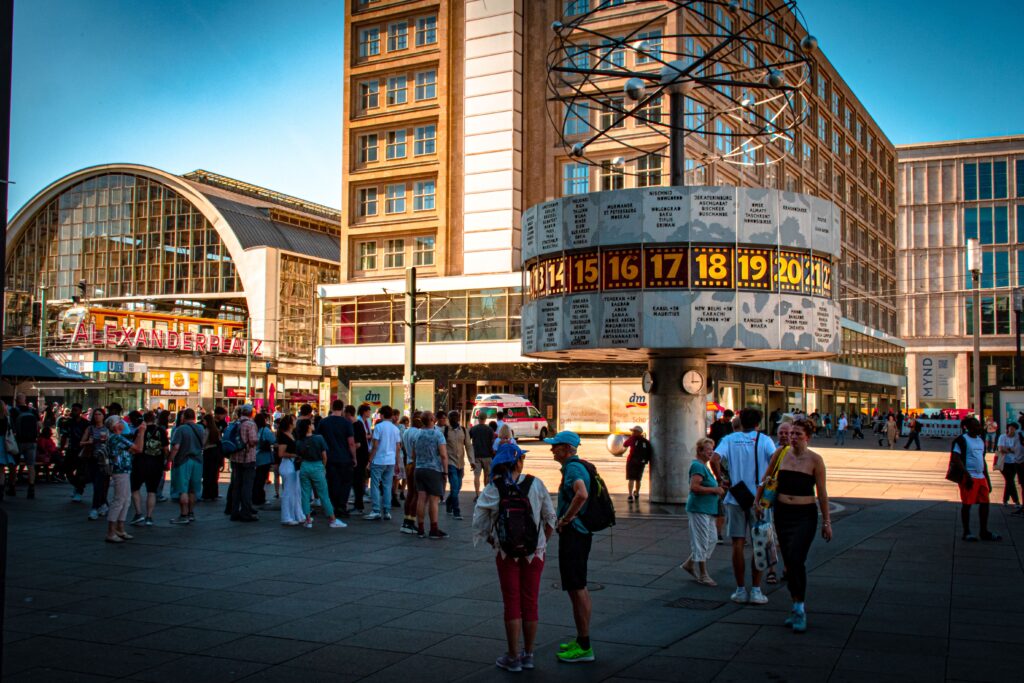
This intricate engineering marvel serves as a global timepiece, displaying the current time for cities worldwide. It’s not just a functional clock but a work of art that adds a touch of international flair to Alexanderplatz.
“Meet me at the clock” is known by Berliners and tourists alike as a popular meeting spot. And, movie-goers might recognize it from The Bourne Supremacy where Bourne meets an agent under the world clock at Alexanderplatz.
Park Inn Berlin-Alexanderplatz
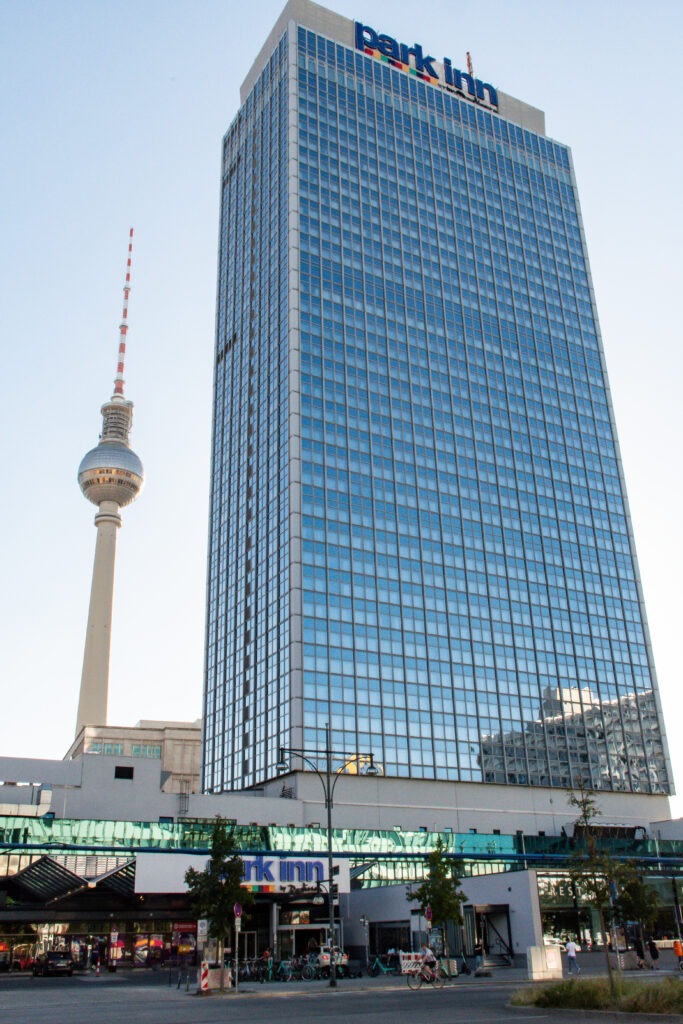
Overlooking the bustling square, the Park Inn by Radisson Hotels is a 37-floor skyscraper at a whopping 125 m making it one of the city’s tallest buildings.
I’ll let you in on a little secret. There is a public viewing platform on the roof, offering great city views and of the TV Tower of course. Here’s how to do this:
- 🕓April – September: 12:00 PM – 10:00 PM; October – March: 12:00 PM – 6:00 PM
- €6.00 (voucher for the day)
- Take the elevator to the 35th floor and the stairs to the 37th floor to purchase your ticket
- You can also purchase drinks from the service desk bar. Lounge chairs are set up for sunset viewing
Fountain of Friendship Between Nations
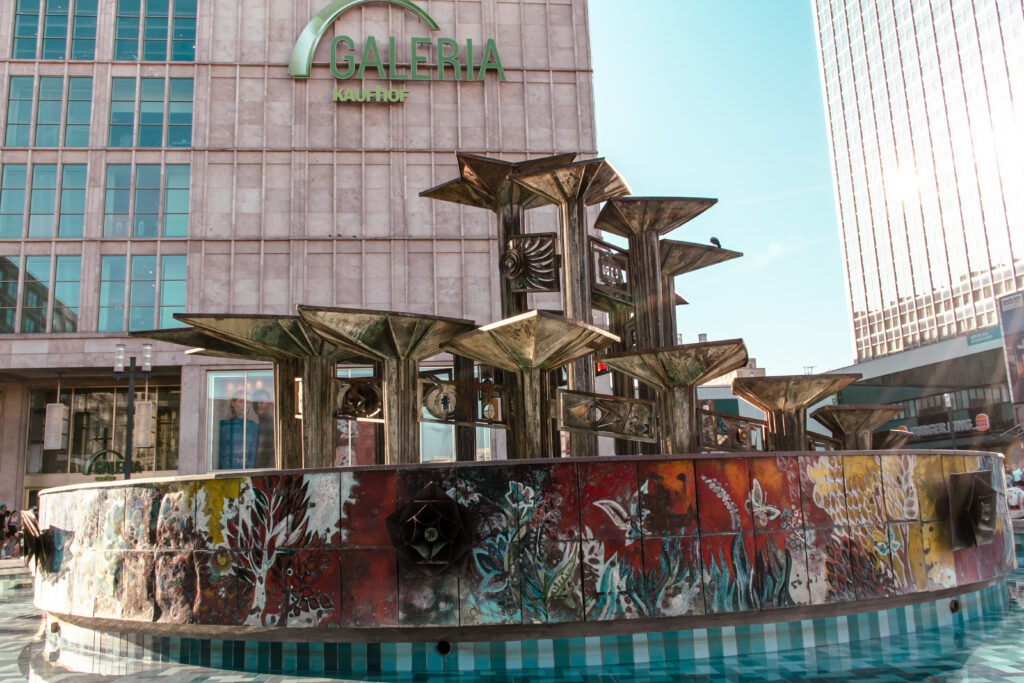
This large fountain stands right in the middle of the square representing a powerful symbol of unity and diplomacy. Its artistic design and flowing waters are meant to represent the ideals of international cooperation and peace.
It’s also another popular meeting place and on a warm day in Berlin, it’s crammed with people looking to cool off. But pull out a camera and most people part ways allowing you to snap a couple of photos.
TV Tower (Fernsehturm Berlin)
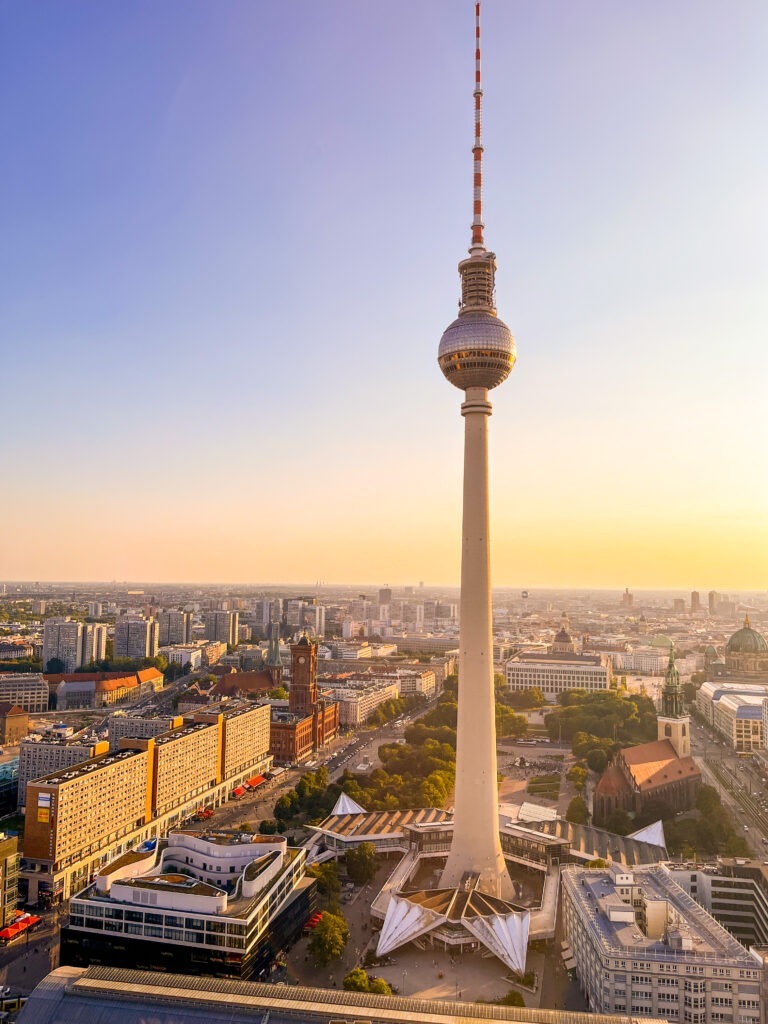
The tallest building in Germany, rising high above the square at 368 m, is the iconic TV Tower. It offers an unparalleled viewing experience from its observation deck, providing panoramic vistas of the city. There’s no better view of Berlin than from the TV Tower.
- 🕓Year Round: 10:00 AM – 10:00 PM (Closed 27.03.2023, 06.11.2023)
- €24.50
- Choose your experience for this world-famous television tower! Click any of the five experiences below for availability and pricing.
Neptune Fountain (Neptunbrunnen)

This magnificent fountain, depicting the Roman god of the sea, Neptune, surrounded by mythological sea creatures, adds a touch of classical beauty to the square. Its historical roots trace back to the 19th century, making it a unique piece of Berlin’s heritage.
St. Mary’s Church (St. Marienkirche)
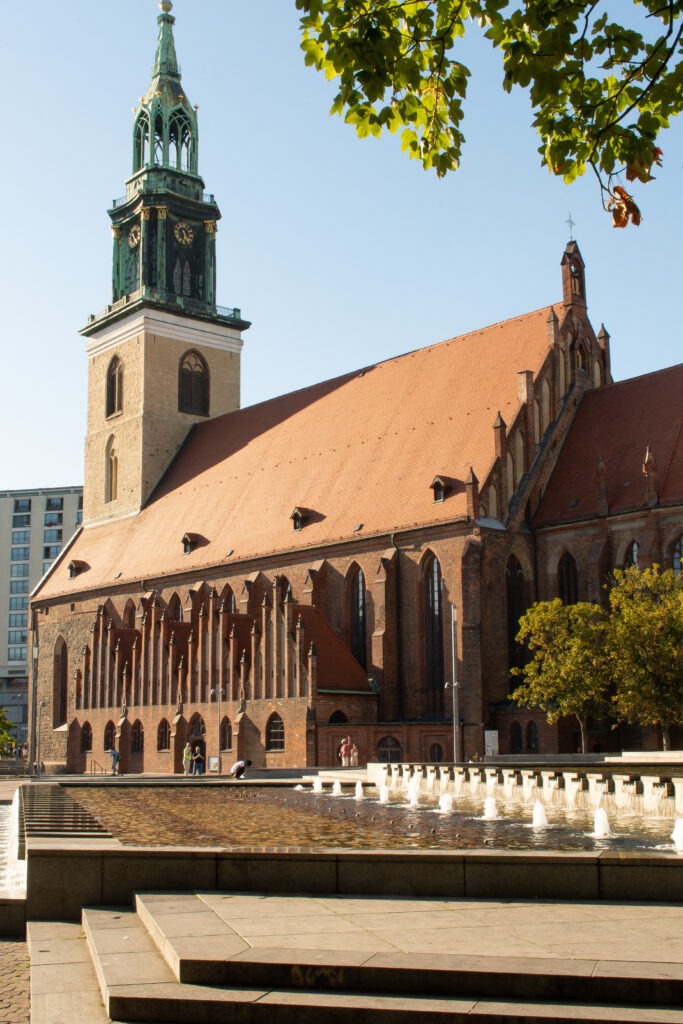
Don’t miss the serene beauty of St. Mary’s Church. This historic church, dating back to the 13th century, offers a tranquil escape from the urban bustle. Its architectural elegance and rich history make it a must-visit for those interested in Berlin’s cultural heritage.
The interior is free to enter.
Red Town Hall
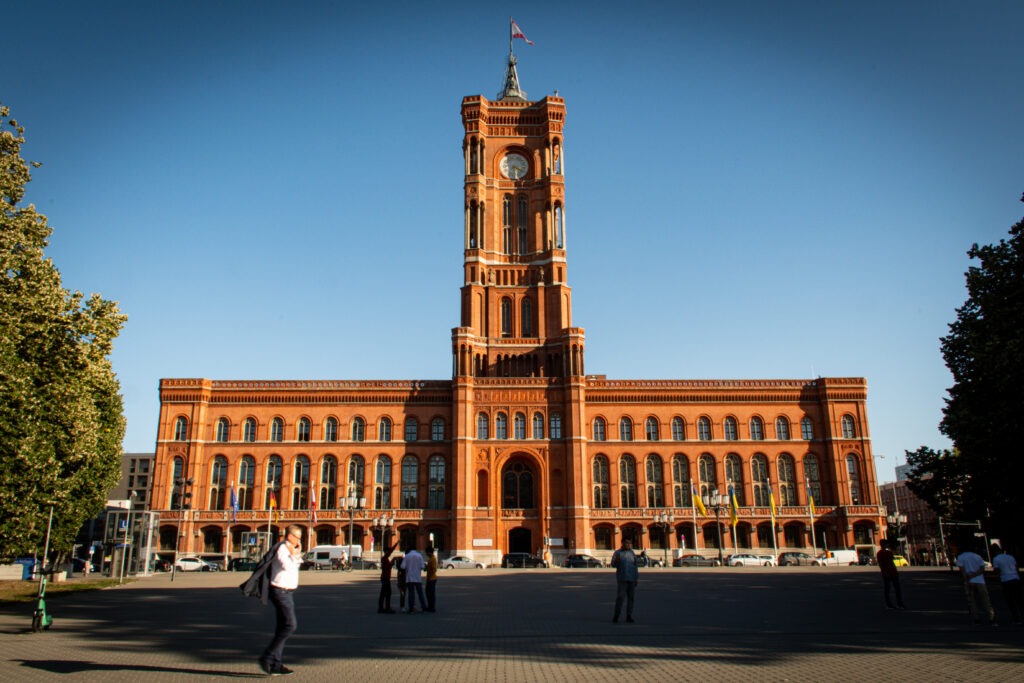
The majestic red city hall, a grand neo-Renaissance building, has been a focal point of Berlin’s political life for over a century. As the seat of the city’s government, it embodies the historical and administrative significance of Alexanderplatz.
The Famous Alexanderplatz Shopping Scene

Visit here and you’ll discover a shopper’s haven at Alexanderplatz. This lively square boasts an array of shopping centers and department stores to satisfy every retail craving you might have. However, there are no boutique or upscale fashion brands. This area targets chain store brands only.
Leading the way is the eye-catching Alexa shopping centre. With its Art Deco-inspired red façade housing around 180 shops, including exclusive international brands. Shop for your favourite souvenirs at the popular Ampelmännern. And, the fun stops here with a bowling alley and escape room too.
For those seeking a department store experience, the stately Galeria Kaufhof, fashioned from sandstone, has everything you might need!
If budget-friendly fashion is your aim, don’t miss Primark, a magnet for the younger crowd. Athletes will find their haven at Decathlon in the Rathauspassage shopping center, offering the perfect gear for every sport.
Almost all shopping is closed on Sundays in Berlin. However, there are a few exceptions to that rule. First, there are 4 days in a year that shops may open. In 2023/2024, those dates are:
- January 29, 2023 | January 28, 2024
- September 3, 2023 | September 1, 2024
- December 3, 2023 | December 1, 2024
- December 17, 2023 | December 15, 2024
The second exception is shopping at Alexanderplatz where most stores are open on a Sunday.
What to See, Do, & Eat Nearby Alexanderplatz
Best things to see & do near Alexanderplatz
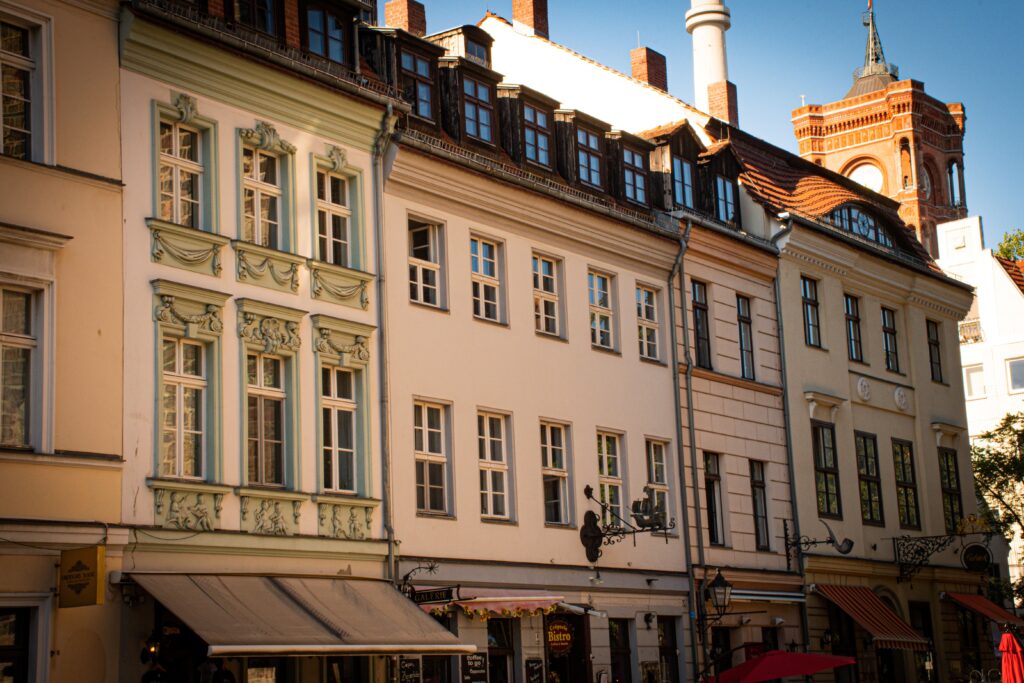
If you’re anything like me, you’re not likely to spend a lot of time in Alexanderplatz. But it does serve as an area that you may have to walk through to get to other nearby sites. And there are some great things to see nearby.
- Berlin Cathedral (Berliner Dom): Explore the stunning Berlin Cathedral, an architectural marvel with awe-inspiring interiors, followed by a walk down the famous Unter den Linden boulevard
- Museum Island: Immerse yourself in art and history at the UNESCO Heritage site of Museum Island, home to world-class museums like the Pergamon Museum and the Neues Museum, and visit on the weekend for the popular book, antique and art flea market
- Old City Hall: Admire the historic Old City Hall, a testament to Berlin’s past, with its ornate facade and rich heritage
- Nikolaiviertel: Stroll through Nikolaiviertel, Berlin’s oldest district, and step back in time with its charming cobblestone streets and medieval atmosphere
- Hackescher Markt: Dive into the vibrant atmosphere of Hackescher Markt, a bustling square known for its trendy shops, art galleries, and lively cafes
- St. Nicholas’ Church Museum: Discover the history of St. Nicholas’ Church Museum, which houses a collection of artifacts that trace the story of Berlin and the church
- Checkpoint Charlie: Visit the famous border crossing from West to East Berlin and learn more about its history by visiting the Checkpoint Charlie open-air museum
- East Side Gallery: Don’t miss checking out the art murals on the longest stretch of the East Side of the Berlin Wall where over 20 artists contributed to the 1.3 km open-air museum
Best Restaurants Near Alexanderplatz

- The Reed: Enjoy contemporary European cuisine with a touch of elegance at The Reed, known for its fine dining experience.
- Brammibal’s Donuts: Satisfy your sweet tooth with vegan delights at Brammibal’s Donuts, offering a delectable range of donuts and pastries.
- Zur letzten Instanz: Step into history at Zur letzten Instanz, Berlin’s oldest restaurant, and savor traditional German dishes in a cozy, historic setting.
- Ephraims: Secure a table on the outside terrace and watch the world go back on the Spree River while enjoying a meal.
- Brauhaus Georgebrau: Experience German beer culture at Brauhaus, a brewpub serving hearty Bavarian cuisine and freshly brewed beer. I recommend adding their delicious vegan German potato salad to your order of beer.
- Hofbräu Wirtshaus Berlin: Immerse yourself in the Bavarian atmosphere at Hofbräu Wirtshaus Berlin, where you can relish classic German dishes and Hofbräuhaus beer.
As a Holidaymaker
Personally, it’s a spot in the city for a quick see, but not my scene to spend any significant time here. There’s no charm. It’s loud, dirty, and a place to catch the bus, tram or train. The crowd is young and touristy.
Is Alexanderplatz safe? Yes, I felt safe as there were always many people around. The square is massive and yet it’s impossible to feel overcrowded. However, the highlight for me was watching the sunset from the 37th floor in the Radisson Park Hotel, and visiting the park where the church and fountain are.
To keep discovering more places in Berlin, you’re likely asking yourself whether a Berlin Welcome Card is worth it be sure to check out my review.
If you want to discover beyond Berlin, check out these day trips from Berlin by train.


